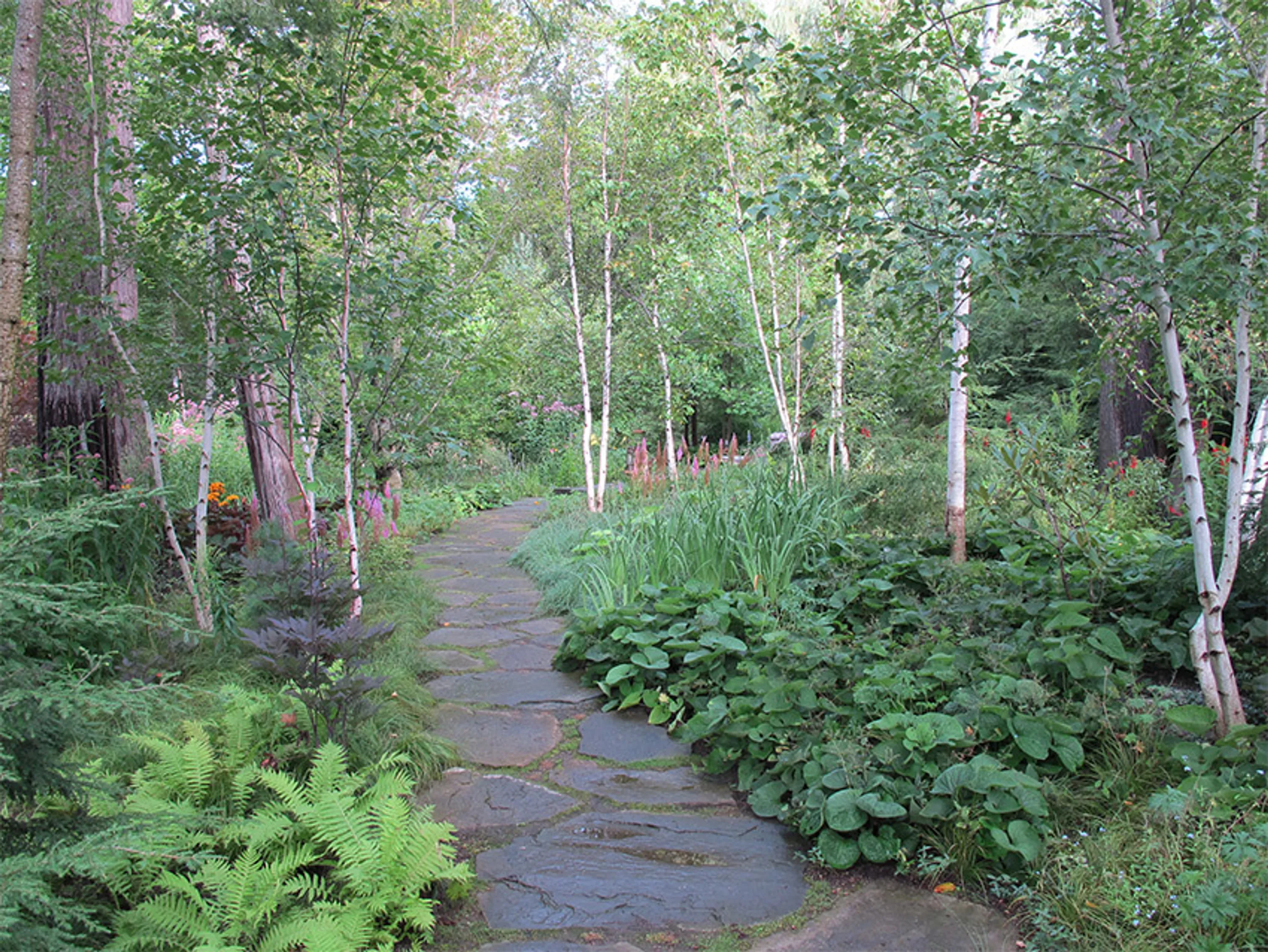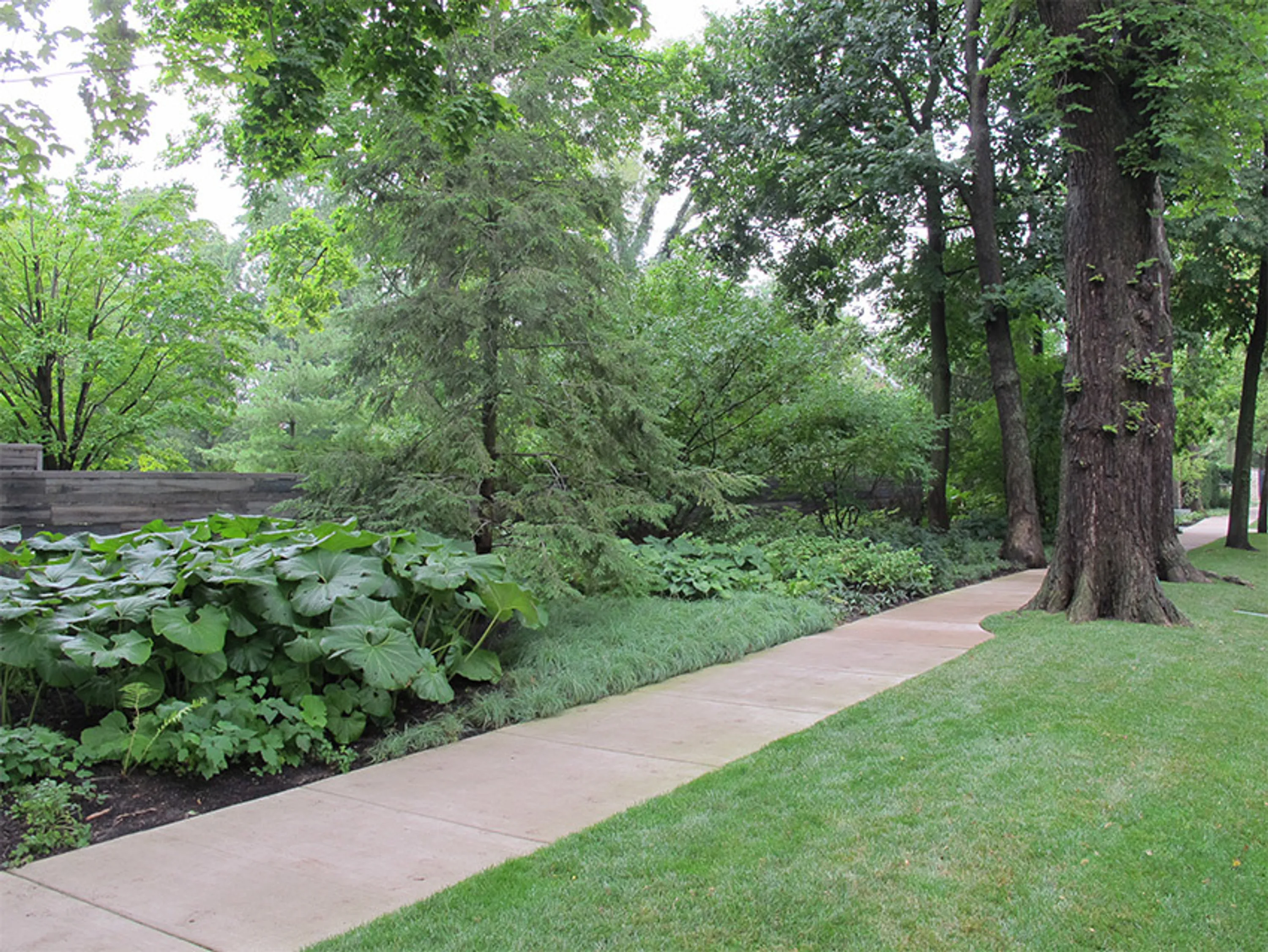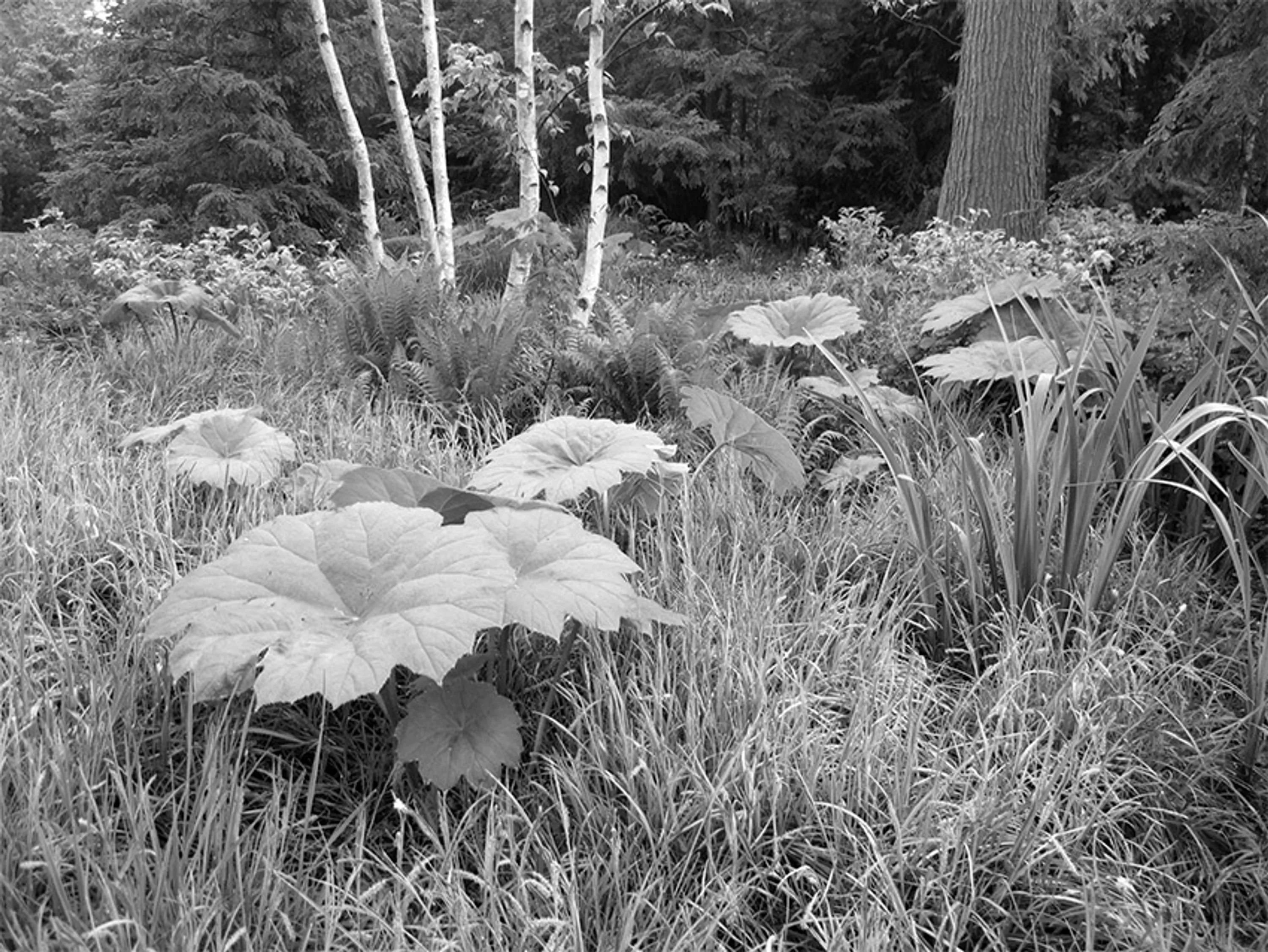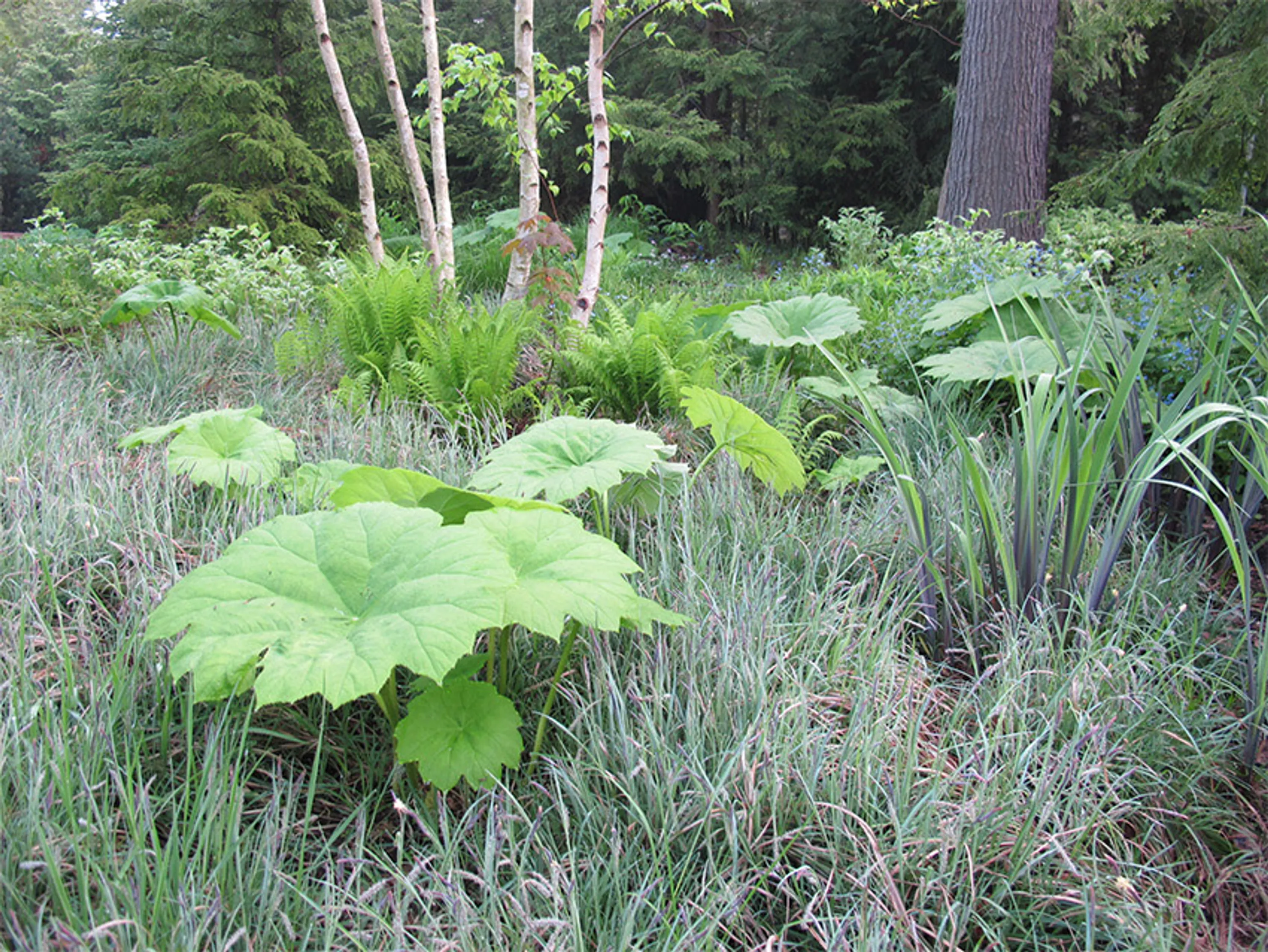4. CHOOSE PLANTS THAT LOOK LIKE THEY’VE ALREADY BEEN COMPETING FOR SUN
Most plants from a nursery are grown in the maximum sun possible for its variety to minimize the length of time it takes to grow. As a result, the gorgeous specimen you bring home from the garden center may look significantly different after six months of growth in your deep shade. Find plants that are already acclimated to the conditions you are bringing them into. We like to look in abandoned nurseries for these gems, but get creative – your neighbor may be trying to get rid of just the thing you need (ask first!)
5. PLANT IN LARGE GROUPINGS OR DRIFTS
Shrubs will thin out once planted into shade, so planting them in masses and in a variety of sizes helps them blend together in a way that looks natural. This also works well for the perennial and ground plane layer, where the depth of shade means everything is competing for light and soil. Find plants that are happy to be in deep shade. Doug advises, “80 percent of a shade garden plant list should be composed of a handful of plants that are happy to be there.”













